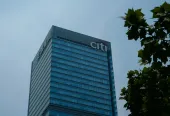What you need to know about the Indian debt market
By Ramanathan DwarakanathanDebt market outlook Indian debt market witnessed heightened volatility during the last week due to Central Bank’s measure to curb liquidity in the system by reducing the limit on LAF repo window to Rs 75,000 Cr and simultaneously increasing the cost of borrowing under the marginal standing facility rate by 200 bps to 10.25%.
Marginal standing facility rate is the rate at which the scheduled banks could borrow funds from the RBI overnight, against the approved government securities up to 1% of their respective net demand and time liabilities funds.
It appears that the one point agenda of the central Bank is to protect INR falling further. A weak rupee will add further to inflationary and fiscal pressures. India’s sovereign rating is currently at the lowest level of investment grading – Baa3 stable. Any further down grade could push the sovereign rating to junk status. Yields across the board surged with the benchmark 10-year bond at its worst week in four-and-a-half years, with the yield rising 40 basis points. Short term instruments like CP – CD’s have been trading at 10 – 10.50% levels.
Debt funds including liquid schemes delivered negative returns due to mark to market impact. Market report suggests that Bank treasuries redeemed from liquid funds approximately Rs 50,000 crores. RBI, in the interim opened a liquidity window of Rs 25,0000 Cr to support the Mutual Fund industry to tide over the liquidity pressure. On Friday(19th July 2013) the sale of Government of India’s bond auction was for Rs 15,000 Cr.
But, the RBI accepted bids worth Rs 11,473 Cr ONLY and allowed the balance devolve on the primary dealers indicating its intent of not favouring the long term borrowing costs to shoot up.
Government will be completing 75% of its borrowing by September and by this time some of the initiatives of the central bank and the government would result in stabilizing of rupee and a moderation in inflation providing room for rate cuts. Investors, especially in the long duration funds should not panic due to the current volatility.
So long as the holding period is 1 – 1.5 years, one should stand to benefit. As I write this, the10 Yr benchmark bond is at 7.94% and the partially convertible rupee ended at 59.74 per dollar. Happy investing!
Disclaimer: No content on this blog should be construed to be investment advice. You should consult a qualified financial advisor prior to making any actual investment or trading decisions. All information is a point of view, and is for educational and informational use only. The author accepts no liability for any interpretation of articles or comments on this blog being used for actual investments




















 Advertise
Advertise










